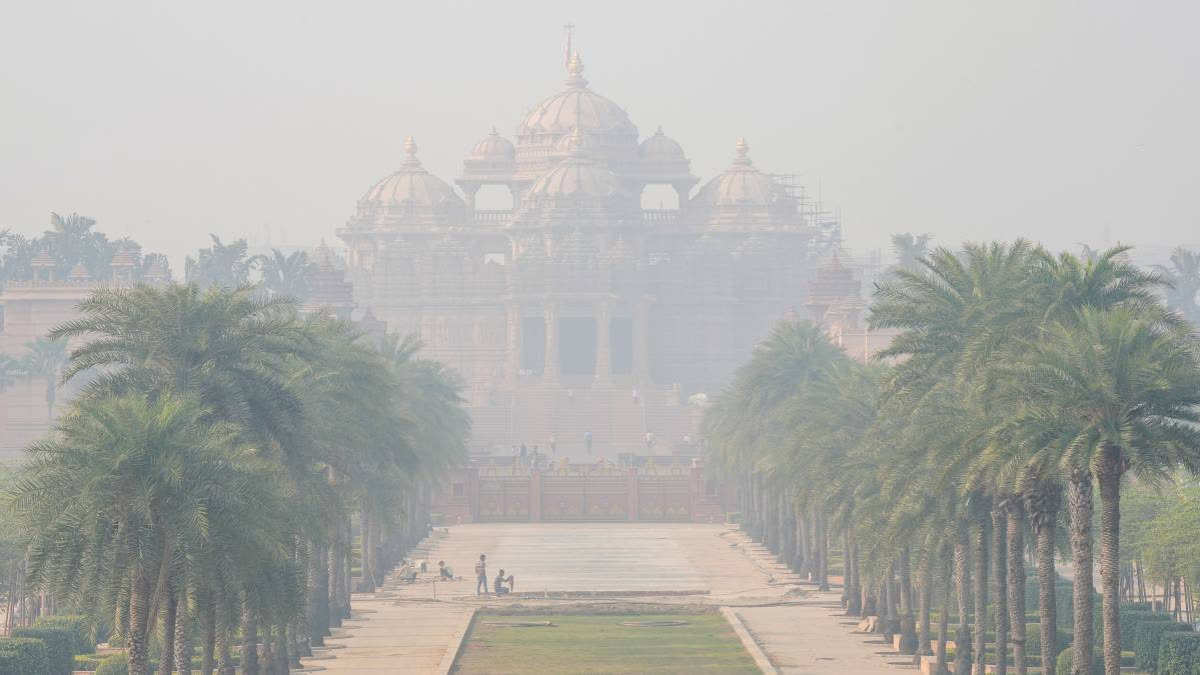New Delhi: The national capital is grappling with alarming pollution levels as the Air Quality Index (AQI) soared to a hazardous 421 on Saturday, posing a severe health risk to its residents. Dominated by PM2.5 and PM10 pollutants, the toxic air raises significant health concerns, particularly for those with respiratory and cardiovascular conditions, children, and the elderly.
Residents across the city are feeling the adverse effects of the deteriorating air quality. Sri, a local resident, shared her daily struggles with ETV Bharat, saying, “A few days ago, it was very polluted, and walking in the morning has become extremely difficult. It affects the eyes, and breathing, and even causes headaches. Every winter, this happens, and while the government claims to be taking action, the situation doesn’t seem to improve. I always advise children and the elderly to stay indoors and only go out with masks when absolutely necessary.”
Saroj Devi, a migrant worker from Gaya, voiced her concerns as she juggles work and family responsibilities amidst the pollution crisis. “We come to work with fear. We leave our children at home but have to earn to pay for their school and hostel fees. When we step out, we wear a dupatta and mask. It’s tough, but we don’t have a choice,” she said.
AQI Breaches Critical Levels
On Friday, the city’s AQI had already climbed to 393 from 371 the previous day, with 22 of 35 monitoring stations reporting “severe” air quality, according to the Central Pollution Control Board (CPCB). By evening, AQI levels breached the 400-mark at 23 stations, signalling an escalating crisis. Vehicular emissions (15.16%) and stubble burning (17.9%) remain significant contributors to the toxic air.
Despite the presence of shallow fog on Friday, a thick haze blanketed the city, reducing visibility and exacerbating health risks. The CPCB identified PM2.5 levels at 194 µg/m³, far exceeding safe limits, with PM10 levels also alarmingly high. These fine particles pose severe health risks, penetrating deep into the lungs and entering the bloodstream.
Supreme Court Demands Accountability
The Supreme Court expressed displeasure over the poor enforcement of Stage 4 restrictions under the Graded Response Action Plan (GRAP). These measures, including a halt on construction activities and restricting non-essential truck entry into the city, are aimed at curbing pollution but have seen lax implementation.
The Court has appointed 13 commissioners to inspect key entry points and assess the enforcement of restrictions. It has also extended the implementation of GRAP-4 measures until at least November 25, emphasizing stricter coordination among departments. Delhi Environment Minister Gopal Rai urged Chief Secretary Dharmendra to ensure compliance with these measures across all sectors.
Weather and Stubble Burning Worsen Conditions
Weather conditions are also playing a critical role in the pollution crisis. The India Meteorological Department (IMD) reported low wind speeds, which reduce the dispersal of pollutants. Northwesterly winds carrying farm fire emissions further exacerbate the situation. Punjab, Haryana, and Uttar Pradesh collectively reported hundreds of stubble-burning incidents on Friday, with Punjab alone recording over 10,400 incidents since mid-September.
Cloud Seeding: An Unviable Solution
The CPCB has ruled out cloud seeding as a short-term solution due to insufficient moisture and high costs. According to an IIT Kanpur study, cloud seeding requires pre-existing clouds with at least 50% moisture, a condition rarely met during Delhi’s dry winters. The estimated cost of the project, approximately ₹3 crore, further limits its feasibility.
Health Crisis Worsens
The hazardous air is taking a toll on public health. Doctors warn that prolonged exposure to such high levels of PM2.5 and PM10 can lead to aggravated asthma, lung infections, and long-term cardiovascular issues. Vulnerable groups, including children, the elderly, and individuals with pre-existing conditions, are at the greatest risk.
The IMD forecasts shallow fog on Saturday, with maximum and minimum temperatures expected to settle at 28°C and 10°C, respectively. However, air quality is likely to remain in the “severe” category, prolonging the public health emergency.
The worsening pollution crisis underscores the urgent need for comprehensive, long-term solutions. While measures like GRAP provide temporary relief, Delhi requires sustained efforts to address the root causes of pollution. As the AQI continues to hover in the hazardous zone, immediate action is essential to safeguard the health and well-being of its residents.
Read More



